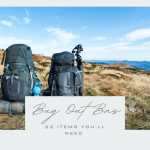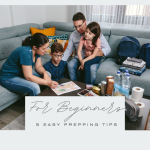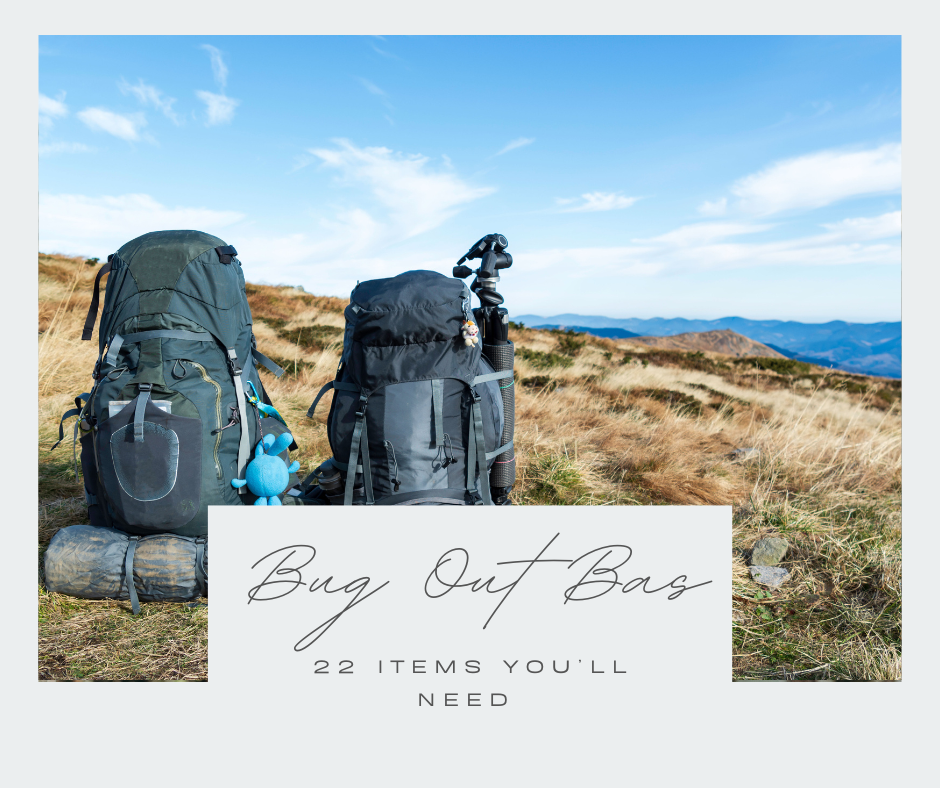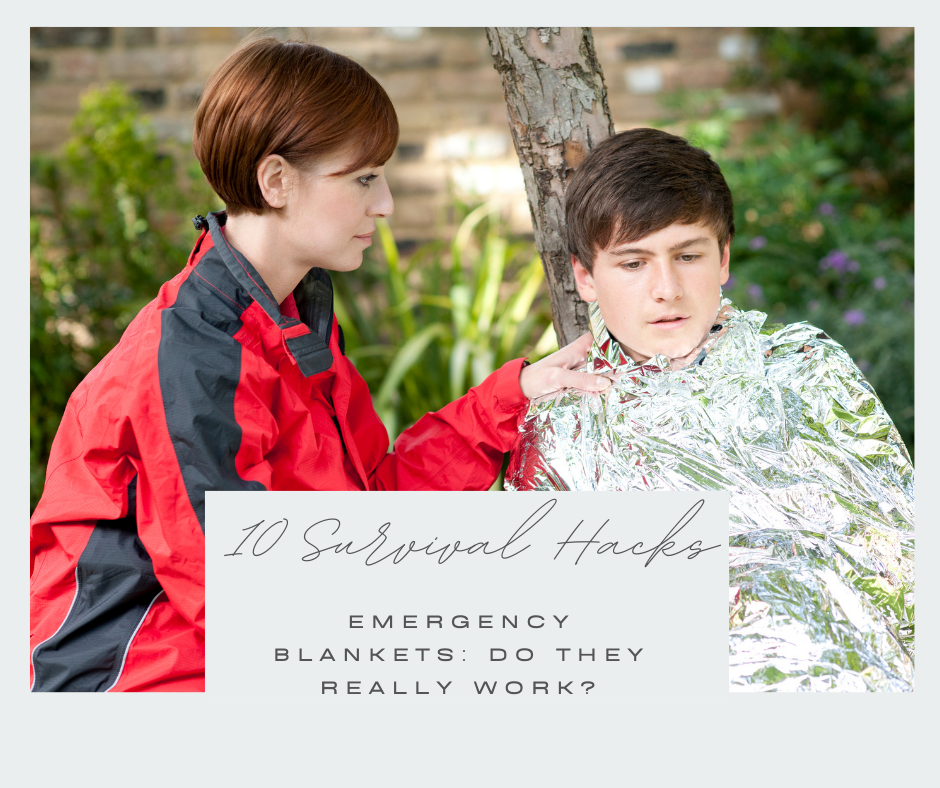Have you ever wondered what you’d need to survive an emergency? Picture this: chaos breaks out, you need to leave your home quickly, and there’s no time to gather your belongings. What do you take? This is where a Bug Out Bag comes into play.
A Bug Out Bag is an essential tool in every prepper’s arsenal. At its core, it’s a collection of survival items you’d need in a crisis when you have to evacuate your home quickly. The name originates from the military term “bug out,” meaning to retreat, usually under fire. Designed to keep you self-sufficient for at least 72 hours, it can prove to be a life-saver when time and resources are scarce. This bag isn’t just for doomsday enthusiasts; it’s a practical kit for anyone who values preparation and safety.
We’ll explore the anatomy of a Bug Out Bag, its importance during emergencies, and divulge the ultimate list of 22 survival items you should pack. Additionally, we’ll delve into some common mistakes people make when packing a Bug Out Bag and tips on how to avoid them. Whether you’re a survivalist or just someone looking to be more prepared, read on to learn about this essential survival tool.
AFFILIATE DISCLAIMER: This post contains affiliate links which means I may receive a commission for purchases made through links. I am an affiliate in the Amazon Associates Program and earn commissions. which means I may receive a commission for purchases made through links at no additional cost to you.
Introduction to the Concept of a Bug Out Bag
A Bug Out Bag is essentially your lifeline in a disaster scenario. It’s a portable kit that contains the items one would require to survive for 72 hours when evacuating from a disaster. The term “bug out” originated from the military, indicating a rapid retreat under threat. However, this concept is not just limited to soldiers on the battlefield. It’s equally relevant for civilians in emergency situations.
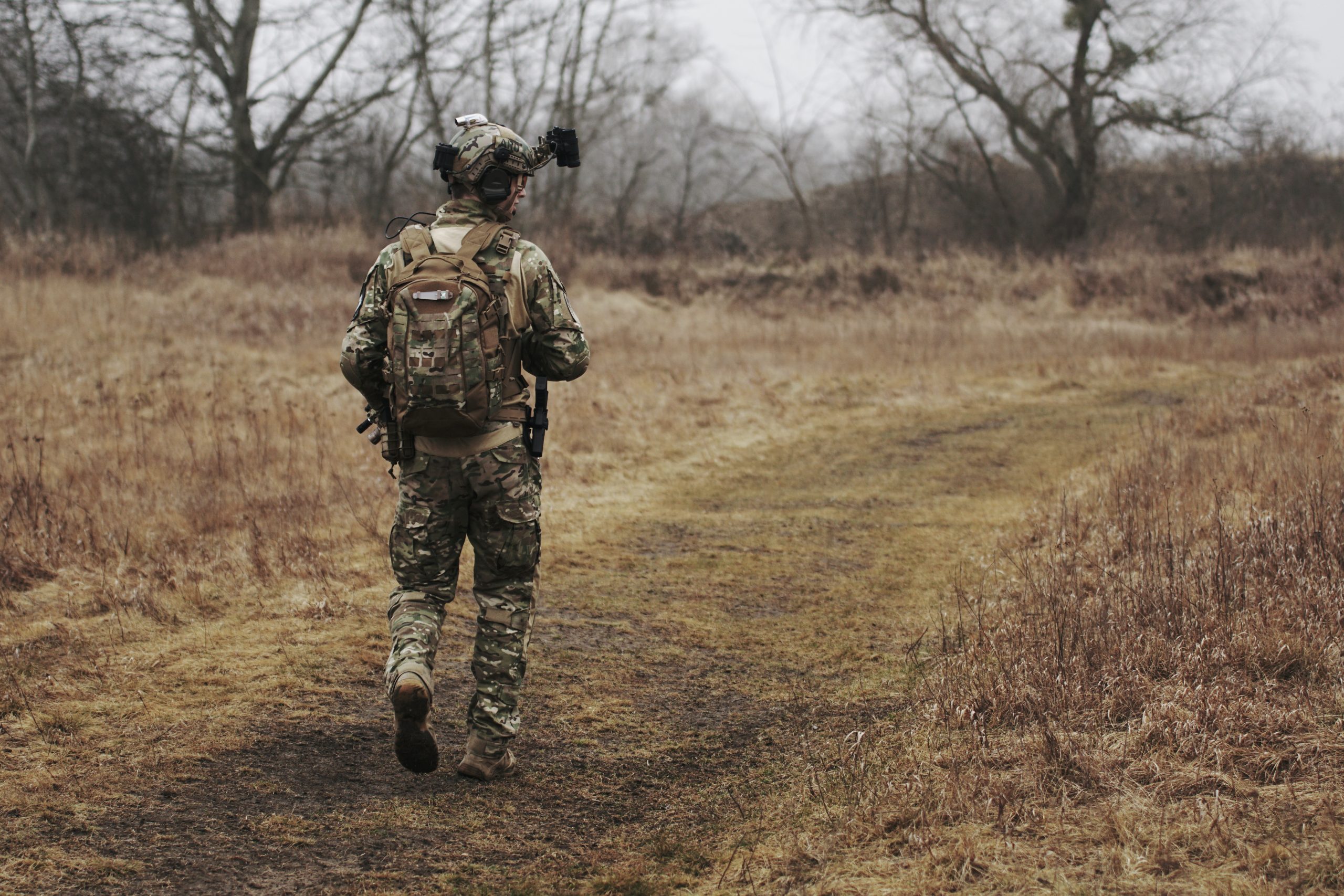
A Bug Out Bag traditionally includes the following categories of items:
- Food and Water: Ready-to-eat meals, water purification tablets
- Shelter and Warmth: Emergency blanket, tent, sleeping bag
- First Aid: Basic first aid kit, prescription medicines
- Tools: Multi-tool, fire starter, flashlight
- Communication: Whistle, mobile phone, emergency radio
Here is a simple table highlighting the significance of a Bug Out Bag in different historical scenarios:
| Historical Event | Importance of a Bug Out Bag |
| World War II | Soldiers used bug out bags to carry essential survival items during quick retreats |
| Hurricane Katrina, 2005 | Many residents had to evacuate quickly with few belongings. A bug out bag would have provided necessary supplies |
| California Wildfires, 2018 | Those who had bug out bags ready could evacuate immediately with all necessary survival items |
What does “Bug Out” mean?
The phrase “bug out” originally stems from military parlance, meaning to retreat quickly, especially under fire. In today’s context, “bugging out” signifies the need to evacuate your location quickly due to an impending threat, be it a natural disaster or societal upheaval.
Has the meaning of “Bug Out” changed over time?
While the essence of the term has remained the same, its application has broadened over time. Initially used primarily in military contexts, “bugging out” is now understood to mean a rapid departure in the face of any kind of emergency, whether it’s due to a hurricane, wildfire, earthquake, or civil unrest.
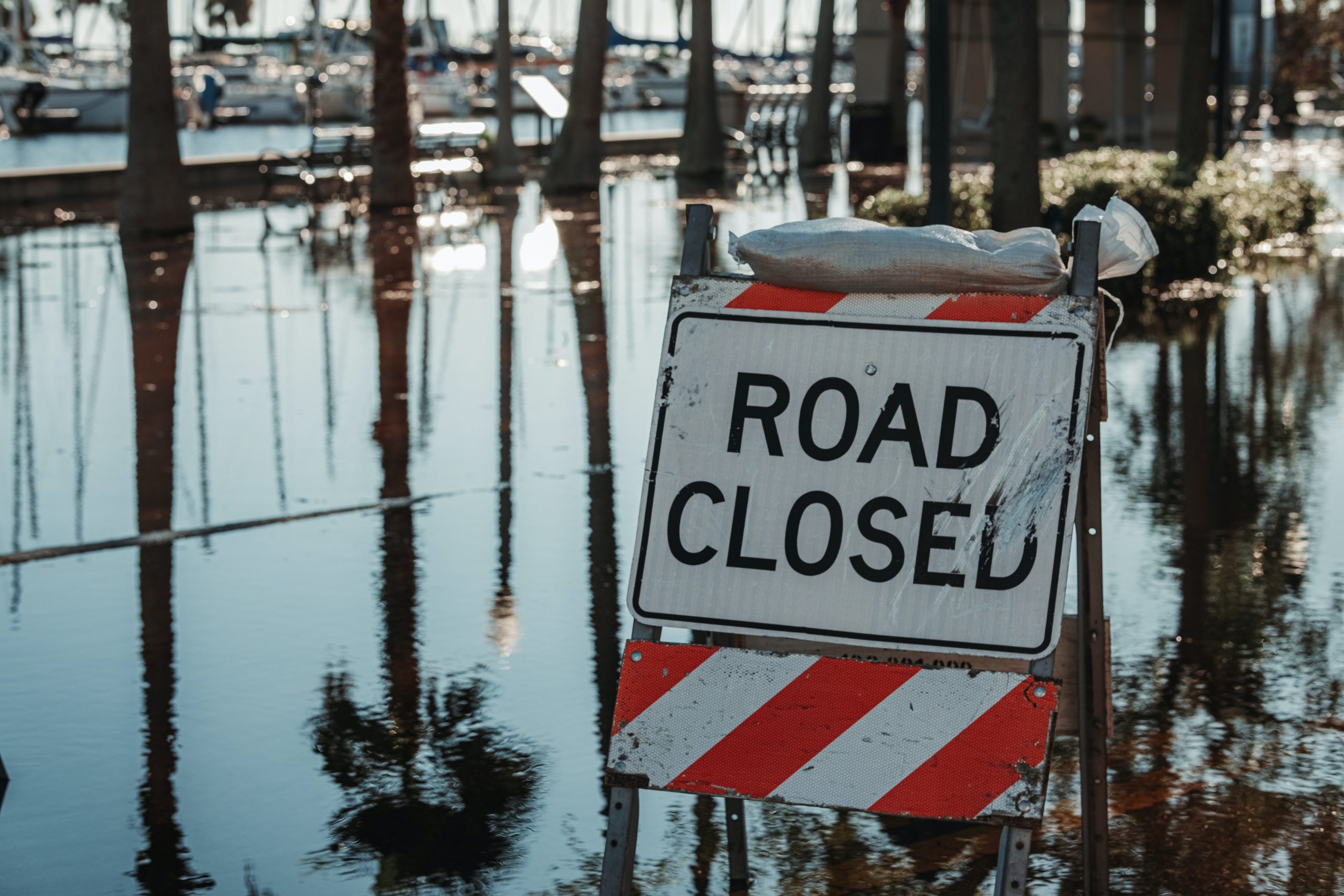
Why would someone need a Bug Out Bag?
A Bug Out Bag is necessary because emergencies can occur without warning. It provides essential supplies that can help sustain you for at least 72 hours, buying you time until further help can be arranged. To find more supplies you should have for emergencies, check my list of emergency supplies on Amazon.
What types of emergencies might warrant a Bug Out Bag?
Here is a list of emergency situations where a Bug Out Bag could be a lifesaver:
- Natural disasters (hurricanes, earthquakes, wildfires)
- Industrial accidents (nuclear radiation leak, chemical spill)
- Terrorist attacks
- Pandemics
- Civil unrest
With this understanding, we now realize the importance of not just having a Bug Out Bag but also knowing what goes into it. Stay tuned as we dive deeper into the anatomy of a Bug Out Bag in the next section.
Understanding the Anatomy of a Bug Out Bag
Imagine you’re building a robot. You’d need different parts like the head, body, and legs. All parts must be present and correctly fitted for the robot to work. A Bug Out Bag is a bit like that. It’s a survival kit, made up of many items, each serving a unique purpose. And just like the robot, a bug out bag’s effectiveness depends on the quality and functionality of its parts.
To give you a clearer picture, let’s list out the common categories of items you’ll find in a Bug Out Bag:
- Survival items (matches, fire starters)
- Shelter items (tents, sleeping bags)
- Food and water (non-perishable food, water purification tablets)
- First aid supplies (bandages, antiseptics)
- Tools (multi-tool, knife)
- Lighting (flashlight, headlamp)
- Communication devices (whistle, mirror)
- Personal items (medication, identification)
Now, while it’s tempting to pack as much as possible, remember this: in an emergency, a heavy bag can slow you down. It’s essential to balance the weight and usefulness of the items in your bag.
What makes a good Bug Out Bag?
A good Bug Out Bag is reliable, comfortable, and the right size for you. But, how do you know what bag to pick? Here’s a table to help you make an informed decision:
| Feature | Description | Why it’s Important |
| Size | Large enough to fit essentials but not so big it becomes unwieldy | A bag that is too large will be hard to carry in an emergency |
| Material | Durable and water-resistant materials like nylon or polyester | Your bag needs to withstand all types of weather conditions |
| Comfort | Adjustable straps and good padding | Comfort is key when you might have to carry your bag for extended periods |
The bag itself is as crucial as what’s inside it. You need something that will comfortably carry your gear and stand up to harsh conditions.
How to choose the right bag for a Bug Out Bag?
When choosing a bag, consider your physical capabilities, the amount of gear you want to carry, and the durability of the bag. The American Preppers Network offers an in-depth guide on choosing the right bag: Choosing a Bug Out Bag.
Also Watch my Video about my EDC bag, the Northface Borealis because It’s a great bag, and it might be the perfect bag for you to create a bug out bag.
Are there brands that specialize in Bug Out Bags?
Indeed, several brands are known for quality Bug Out Bags. Brands like 5.11 Tactical, Condor, and Maxpedition are top choices. However, your choice should depend on your personal needs and preferences. Here’s a quick comparison:
| Brand | Strengths | Weaknesses |
| 5.11 Tactical | Durable, Plenty of storage space | Higher price point |
| Condor | Versatile, Affordable | Less durable |
| Maxpedition | Compact, Rugged | Limited storage space |
As you can see, understanding the anatomy of a Bug Out Bag involves some decision-making. Remember, this bag could be your lifeline in an emergency, so choose wisely. We’ll explore more about Bug Out Bags in the next section, so stay tuned!
The Importance of a Bug Out Bag in Emergencies
Imagine a sudden emergency – a hurricane, wildfire, or societal unrest. It’s time to leave your home, fast! A Bug Out Bag, a pack of essentials designed for quick evacuations, can be your lifeline in such crises. The bag equips you for survival, promoting self-reliance when outside help may not be immediate.
The Bug Out Bag goes beyond a simple backpack with a change of clothes. It’s a survival kit filled with essential items to get you through the first 72 hours of an emergency. According to the Federal Emergency Management Agency, the first 72 hours after a disaster are the most critical, and having a well-prepared Bug Out Bag increases your survival prospects significantly.
| Essential Categories in a Bug Out Bag | Why They’re Important |
| Food and Water | Covers basic survival needs |
| Medical Supplies | Helps manage injuries or illnesses |
| Shelter (compact tent, sleeping bag, etc.) | Provides protection against harsh weather |
How does a Bug Out Bag enhance survival prospects?
Each item in a Bug Out Bag serves a specific purpose aimed at ensuring your survival. Imagine it like a Swiss Army knife, but instead of tools, it’s filled with necessary items for emergency situations. Here’s a simple list of what might be included:
- Food
- Water
- Medical supplies
- Shelter
- Other survival gear
While we don’t have exact survival rates, the U.S. Department of Homeland Security strongly encourages citizens to have a disaster supplies kit, like a Bug Out Bag, at the ready. This readiness significantly improves your odds of making it through the initial stages of an emergency.
Case Studies: When a Bug Out Bag Made the Difference
There are numerous examples where a Bug Out Bag has made a critical difference. Let’s explore two such cases:
Case 1: During Hurricane Katrina, many survivors reported that Bug Out Bags helped them weather the initial days of the crisis. With government aid slow to arrive, these bags provided crucial supplies to keep people alive.
Case 2: In 2018, the fast-spreading Camp Fire in California gave residents little time to evacuate. Having a Bug Out Bag ready enabled quick evacuation and ensured that they had essential items on hand during those initial, critical hours.
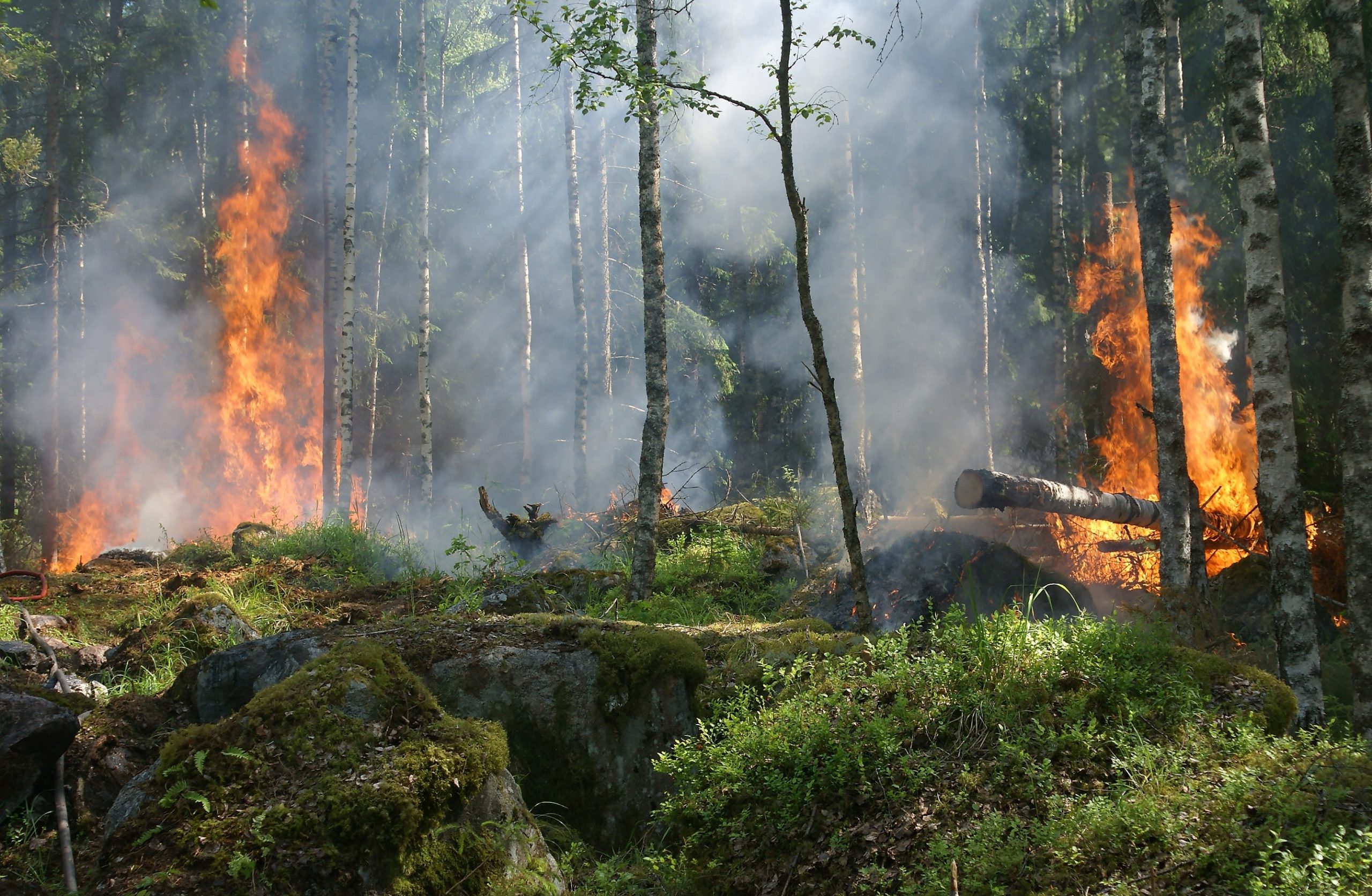
| Emergency | Bug Out Bag’s Role |
| Hurricane Katrina | Provided crucial supplies for initial days |
| Camp Fire in California | Enabled quick evacuation with essential items |
These cases underscore the fact that a Bug Out Bag can indeed make a significant difference in times of emergency. The key takeaway? Preparation is paramount. After all, as Benjamin Franklin wisely said, “By failing to prepare, you are preparing to fail.”

From enhancing your survival prospects to helping you stay self-reliant in emergencies, the importance of a Bug Out Bag is undeniable. Let’s now shift our focus to unveiling the 22 ultimate survival items for a Bug Out Bag. How many of these items do you already have, and which ones do you need to add to your list? Let’s find out!
Don’t forget to check out the U.S. Department of Homeland Security’s guide on emergency kits for more information.
Unveiling the 22 Ultimate Survival Items for a Bug Out Bag
Survival in an emergency hinges on preparation. Here is a handy, categorised table of 22 essential items for your Bug Out Bag:
| Category | Item | Use |
| Hydration | Water purification tablets | Make any water safe to drink |
| Nutrition | Emergency food rations | Sustain energy levels |
| Medical | First Aid kit | Treat injuries |
| Tools | Multipurpose tool | Various applications |
| Light | Flashlight | Illuminate surroundings |
| Fire | Matches or lighter | Create fire for warmth, cooking |
| Shelter | Compact shelter | Provide cover from elements |
| Navigation | Local maps and compass | Determine location, direction |
| Communication | Whistle, Solar-powered radio | Call for help, receive updates |
| Power | Portable charger | Charge essential electronics |
| Personal Hygiene | Hygiene items | Maintain cleanliness |
| Essential Docs | Photocopies of documents | Identify yourself, access services |
| Multiuse Items | Duct tape, Rope | Numerous uses |
| Protection | Work gloves, Rain poncho, Insect repellent | Protect body |
| Miscellaneous | Emergency cash, Notebook and pen, Sewing kit | Various uses |
Why are these items considered essential for survival?
Each item in the table above holds unique importance. For example, a multipurpose tool can open cans, cut ropes, and even act as a weapon if necessary. It’s not just about surviving, but surviving efficiently.
If you want to learn more about Emergency Planning for your family make sure to read this post! Prepper Queen Guide to Emergency Family Planning
What are some optional items that could be included?
The table below lists additional items that you might want to pack depending on personal needs:
| Personal Need | Additional Item |
| Medical | Prescription medicines |
| Vision | Extra eyeglasses |
| Infant Care | Baby supplies |
| Pet Care | Pet food |
How should these items be packed in a Bug Out Bag?
Packing a Bug Out Bag is an art. It’s important to organize your items based on necessity and ease of access:
| Necessity Level | Bag Area | Items to Pack |
| High | Easy Reach | Water, Food, First Aid Kit, Lighter |
| Medium | Middle | Shelter, Clothes, Cash, Charger |
| Low | Bottom | Non-essential personal items, Extra Supplies |
Now, let’s prevent packing mishaps. In the next section, we’ll discuss common mistakes people make when packing their Bug Out Bags and how you can avoid them.
Common Mistakes when Packing a Bug Out Bag
Packing a Bug Out Bag is like preparing a lifeboat. Just as a lifeboat can be a lifeline during a shipwreck, a Bug Out Bag can be a game-changer during emergencies. But just like how overloading a lifeboat can capsize it, overpacking or improperly packing a Bug Out Bag can spell disaster. Let’s discuss some common mistakes and learn how to avoid them.
What are the implications of overpacking a Bug Out Bag?
Overpacking is a common pitfall when preparing a Bug Out Bag. Picture this: you need to leave quickly, but your bag is so heavy that it slows you down. According to a study by the US Army Research Institute, individuals carrying a load equal to 30% of their body weight were twice as likely to suffer an injury. Your Bug Out Bag is meant to aid your survival, not hinder it.
A table to help you prioritize:
| Essential Items | Why It’s Needed |
| Water and purification tools | Vital for hydration and health |
| Food and cooking tools | To maintain energy levels |
| Shelter and warmth items | Protection from the elements |
| First aid kit | To handle medical emergencies |
| Communication tools | To stay informed and reach out for help |
How to ensure your Bug Out Bag isn’t too heavy?
Making sure your Bug Out Bag isn’t too heavy is crucial. Consider this: would you rather have a hefty bag that you can’t carry, or a manageable load with essentials that keep you alive? Follow these tips for effective weight management:
- Prioritize – Only pack items vital for survival.
- Dual Purpose – Choose items that serve more than one function.
- Regular Checks – Routinely evaluate your bag to remove unnecessary items.
- Test – Practice carrying your bag to ensure it’s manageable.
How does neglecting personal needs affect Bug Out Bag effectiveness?
Failing to include personal items, like prescription medications or eyeglasses, is another typical mistake. According to the American Red Cross, over 60% of Americans rely on some form of vision correction. Without their corrective lenses, their survival odds could drastically decrease.

How often should a Bug Out Bag be updated?
Keeping your Bug Out Bag updated is non-negotiable. Imagine: You’ve packed a beautiful Bug Out Bag, but when you need it most, you find your batteries have died, or your food has expired. It’s suggested to check and update your Bug Out Bag every six months.
Avoiding these mistakes can significantly improve your Bug Out Bag’s effectiveness. And remember, your Bug Out Bag is not a one-and-done project, but a dynamic kit that adjusts to your evolving needs.
Now that you’ve learned about these common mistakes, let’s move onto how to utilize your Bug Out Bag in an emergency situation effectively. After all, having a well-packed Bug Out Bag is only half the battle. Knowing how to use it is equally essential for your survival.
Using Your Bug Out Bag in an Emergency
In the face of an emergency, understanding how to use your bug out bag is as crucial as the survival gear it carries. Imagine your bug out bag as a personal survival toolbox. But like any toolbox, it’s only as good as the person using it. That’s why it’s key to know your gear inside and out. Also make sure you finished your emergency plan for your family and if you haven’t read this post to get help with creating one.
To help, here’s a handy table that explains some common items in a bug out bag and their uses:
| Item | Primary Use | Secondary Use |
| Fire Starter | Starting fires | Cooking, Purifying Water |
| First Aid Kit | Treat injuries | Managing allergies |
| Food & Water | Sustenance | Maintaining focus in stress |
Remember, “knowledge is power.” Getting to know your bug out bag is like a cheat sheet in a test – it can give you a strong upper hand in any crisis. If you feel like you are a complete beginner to all of this, Check out my post, Prepping Tips for Complete Beginners, and you’ll find that it is not as complicated as it sounds.
How to adapt Bug Out Bag use to different types of emergencies?
Different emergencies call for different strategies. It’s like a chess game where your moves are dictated by your opponent’s actions.
For example, in a natural disaster like an earthquake, your focus might be on items like your first aid kit, water purification tablets, and emergency blanket. However, in a societal unrest situation, your attention might shift to self-defense items and communication devices.
Here’s a list of quick decision-making tips for emergencies:
- Know your items: Familiarize yourself with the items in your bag.
- Assess the situation: Understand the emergency and your immediate needs.
- Stay calm: Panic clouds judgment, so try to keep a cool head.
Is there a universal procedure for using your bag in emergencies?
There’s no one-size-fits-all way to use a bug out bag in emergencies. Every situation is unique. The key is to understand the principles of survival and apply them to your circumstances.
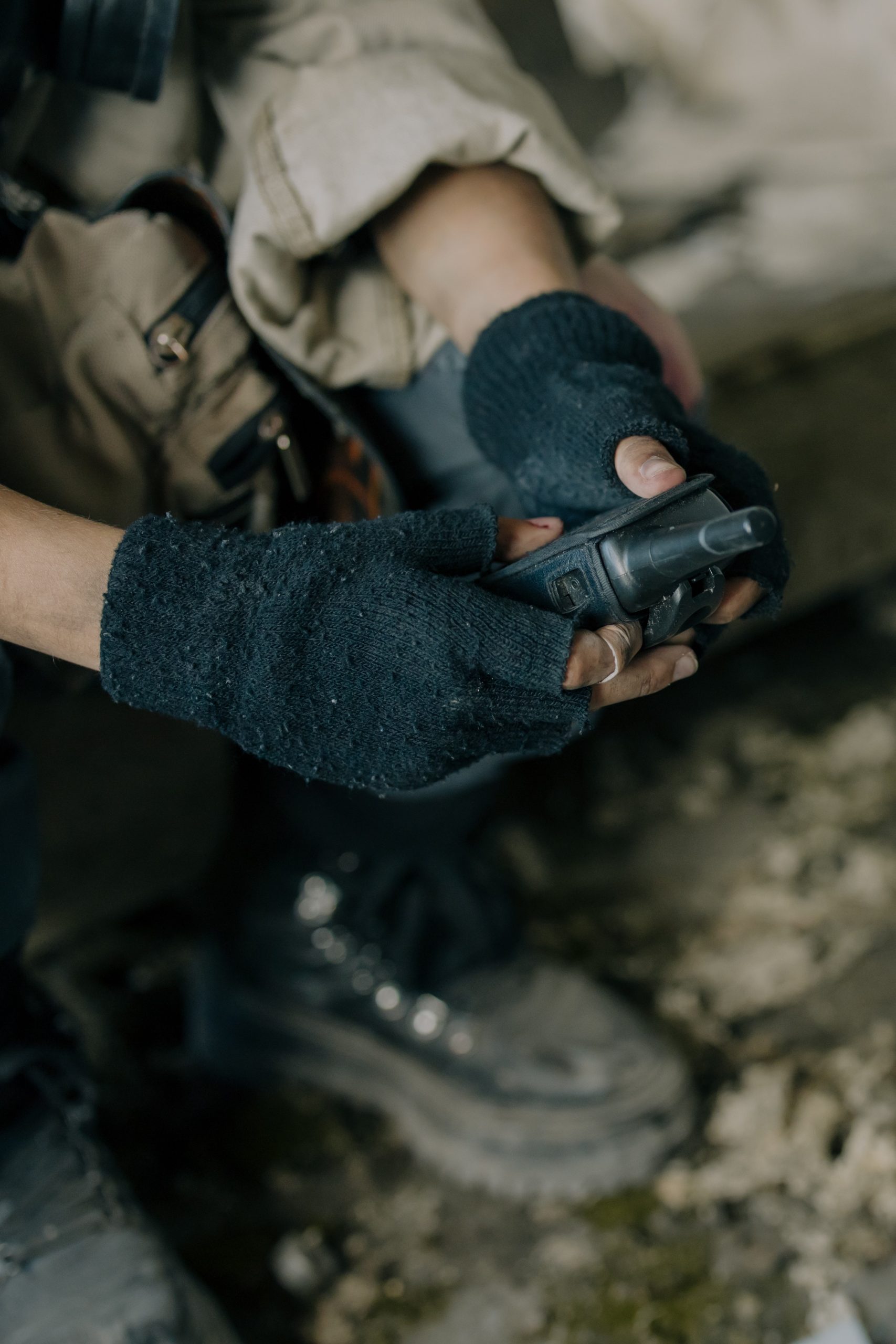
Here are some key principles to remember:
- Prioritize safety: Your well-being is the top priority.
- Assess your needs: Different emergencies will require different items.
- Improvise: The items in your bag are tools to be used creatively to solve problems.
Remember the wise words of Bruce Lee, “Be water, my friend.” Being adaptable and making the most of what you have can be the difference between survival and catastrophe.
Next, we’ll look at how your bag fits into the larger picture of preparedness. Your bug out bag is just one piece of the survival puzzle. So stay tuned as we explore the role of a bug out bag in overall preparedness.
Concluding Thoughts: The Role of a Bug Out Bag in Overall Preparedness
So, we’ve journeyed through the realm of survival preparedness, and we’ve discovered that a bug out bag is more than just a sack of items. It’s your lifeline, your best friend when things get tough. But remember, a well-prepared bug out bag is only as effective as the person using it. So gear up, explore, and learn. Your survival depends on it. Get the essentials you need on Amazon
The following table summarizes the importance of different elements in a good bag:
| Elements in a Bug Out Bag | Why It’s Important |
| Food and Water | Basic sustenance and hydration |
| Shelter and Warmth | Protection from the elements |
| First Aid Kit | Medical emergencies |
| Tools | Utility and self-defense |
How does preparing a Bug Out Bag contribute to a larger survival plan?
See, preparing a bug out bag isn’t just about stuffing things into a bag. It’s about planning, strategizing, and knowing exactly how each item in your bag can help you in various scenarios. Think of it as your mini survival plan within a larger survival strategy.
How can one expand beyond a Bug Out Bag for survival preparedness?
Well, my friend, you’ve taken the first step on a larger journey. Your curiosity about bug out bags could well be the spark that ignites a more profound interest in survival preparedness. And why stop there? There’s a world of knowledge out there waiting for you.
Here’s a list of broader survival preparedness concepts to consider:
- Understanding your surroundings: Know the potential risks and dangers around you.
- Developing survival skills: Learn skills like hunting, fishing, fire-making, and more.
- Fitness: Physical strength and endurance can be lifesavers in survival situations.
Our parting words are these: Keep learning, keep growing, and stay prepared. Embrace the motto: Always be ready, so you never have to get ready. Now, go forth, fellow prepper, and conquer your world of survival preparedness!

Frequently Asked Questions
What is a Bug Out Bag?
A Bug Out Bag is a portable kit that contains all the items one would need to survive for approximately 72 hours when evacuating from a disaster. The concept is to “bug out” (leave quickly) when a calamitous event occurs.
How to choose the right bag?
When choosing the right bag, consider the size, durability, comfort, and accessibility of the bag. The bag should be big enough to carry all necessary supplies, but not so large that it becomes cumbersome. It should be made from durable materials to withstand harsh conditions, comfortable to wear for extended periods, and designed in a way that allows easy access to its contents.
Why is a Bug Out Bag important in emergencies?
It is essential in emergencies because it contains critical supplies that can help you survive when you need to evacuate quickly. It is designed to provide you with the necessary tools and supplies to keep you safe and sustain you for at least 72 hours.
What are the 22 ultimate survival items?
The 22 ultimate survival items generally include items for basic needs, tools, and first aid. This includes water purification tools, food rations, shelter items like a tent and sleeping bag, fire starters, a multi-tool, knife, flashlight, emergency blanket, compass, map, first aid kit, personal hygiene items, duct tape, a whistle, a portable charger, cash, personal documents, a change of clothes, and gloves. You can find many of these essentials here, on Amazon.
Why are these items chosen for the ultimate survival Bug Out Bag?
These items are chosen for their versatility and utility in survival situations. They serve the purpose of meeting essential human needs: food, water, shelter, warmth, navigation, personal hygiene, and safety. They are also lightweight and compact to keep the bag portable and easy to carry. I discuss more about this on my youtube channel, make sure to follow along and subscribe!
How to properly pack these items in a Bug Out Bag?
To properly pack these items, you should prioritize based on their necessity. Items for survival like water and food should be readily accessible. Distribute weight evenly to prevent the bag from becoming too heavy on one side. Place heavier items closer to your back and lighter ones on the outside.
What are some common mistakes when packing your bag?
Common mistakes include overpacking, forgetting important documents, packing items at the bottom of the bag that you’ll need frequent access to, not packing enough water, and not considering the weight distribution.
How can these mistakes be avoided?
These mistakes can be avoided by creating a checklist of essential items, regularly updating the contents, conducting practice runs to ensure everything fits comfortably and is accessible, and by taking into consideration personal needs and circumstances.
How to use the items during an emergency?
In an emergency, evaluate your situation first to understand which items you’ll need immediately. Use your multi-tool or knife for various tasks, your water purification tools for safe drinking water, your shelter and warmth items to protect against the elements, and your first aid kit for any medical emergencies.
How to maintain and update a Bug Out Bag?
Regularly check your Bug Out Bag every six months. Rotate out food and water supplies to keep them fresh. Update personal documents and currency. Test all gear to ensure it’s working properly, replace batteries if needed, and replace any items that have expired or been used up.



